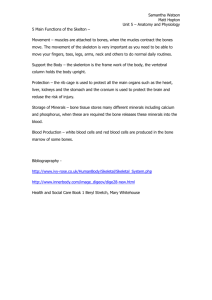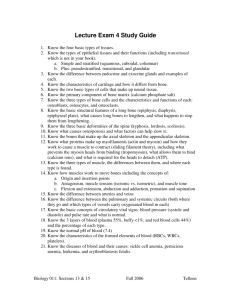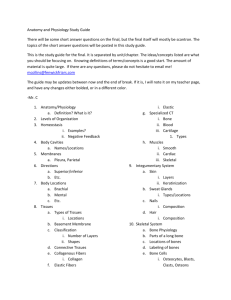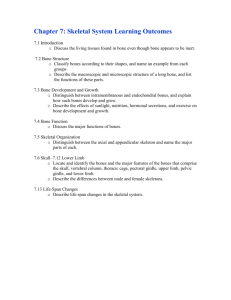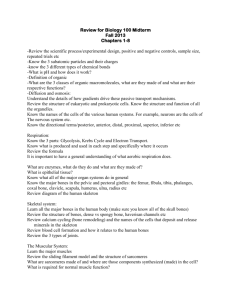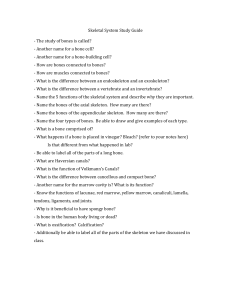Bone Markings
advertisement
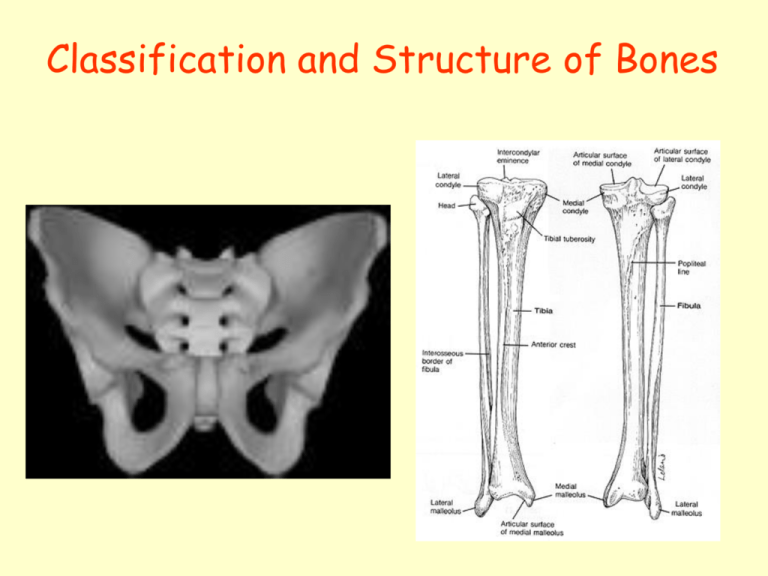
Classification and Structure of Bones Goals for Today Learn about skeletal support system Learn about the 4 bone groups Learn about bone structure Learn about bone markings and their functions Pg. 78 Support System Cartilage - gel-like matrix with fibers (EX:collagen) - chondrocyte (Cartilage) cells Bone - matrix filled with calcium salts - rigid = calcium salts - flexible = collagen matrix - osteocyte cells Activity 3 – Heat and HCl on Bones Heat – dries the organic matrix of the bone What will happen? Vinegar – removes calcium salts from bone What will happen? Hyaline - sturdy support w/ some “give” - EX: nose, trachea, ribs Elastic - flexible - lots of elastin fibers - EX: epiglottis, ear Fibrocartilage - resists compression - EX: intervertebral disks Be able to give examples Cartilage is your Friend !! Infant Adult The 4 Bone Groups Long Bones – longer than wide. EX: femur, humerus Short Bones – cube-shaped. EX: tarsals, carpals Flat Bones – thin and flattened. EX: skull, ribs Irregular Bones – “other bones” EX: vertebrae Pg. 75 Pg. 75 Epiphyseal Plate (Growth) Central Canal w/ blood vessels, nerves Osteon Lacunae w/ bone cells Bone Markings Vessel Passage Muscle Attachment Joints Tuberosity Crest Head Condyle Spine Foramen To Do List 1. Learn to categorize bones into the 4 groups 2. Examine femur cross-section. Identify the parts 3. Look at bone slide. Identify parts 4. Learn bone marking vocabulary. Identify each marking on an actual bone 5. Look at vinegar and heat-treated bones.
